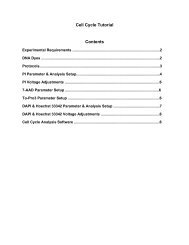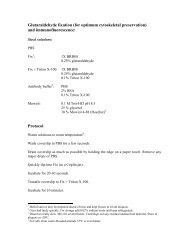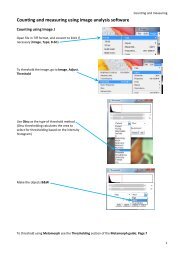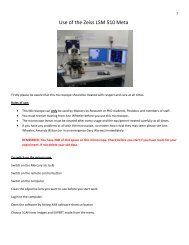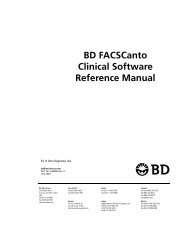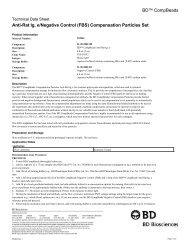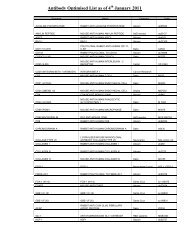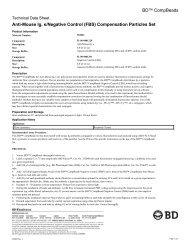The Clean Microscope
The Clean Microscope
The Clean Microscope
You also want an ePaper? Increase the reach of your titles
YUMPU automatically turns print PDFs into web optimized ePapers that Google loves.
How to Recognize DirtTo recognize dirt on optical surfaces, you should havean idea of the best result you can expect from a specificmicroscopy method and a specific application. If you thencompare your expectation with the visual image in termsof maximum definition, best contrast and cleanness, youwill immediately recognize whether or not your microscopeis soiled anywhere.If the sharpness or contrast of the image is lessthan optimum, there is a high probability that yourmicroscope optics are not clean.To locate the dirt, proceed as follows:Carefully rotate objectives or cameras by a small amountwithin their thread.Check specimen slide and cover slip by moving the specimenwhile focusing on the upper and lower surfaces insuccession.Check the condenser by moving it up and down and, ifpossible, slightly swiveling or turning the front lens.<strong>The</strong> affected optical surface is identified when the dirt followsthe movement of the suspected optical component.<strong>The</strong> camera is the only exception to this rule: dirt withinthe camera will not move when you move the camera.A macroscopic check for larger dust particles and scratcheson optical surfaces can be carried out with a 3x to 6xmagnifier, or an eyepiece held the wrong way up.Dirt on the front lens of an objective is easily detected ifyou look at an evenly lit surface from the rear end of theobjective. <strong>The</strong> inner lens components produce an enlargedimage of even the smallest bit of dirt on the front lens.<strong>The</strong> final check should always be an assessment of the imagequality improvement achieved.<strong>Clean</strong> (left) and oil-soiled (right) front lensof a Plan-APOCHROMAT 20/0.80 objective.Toad kidney, trichrome staining, brightfield5





